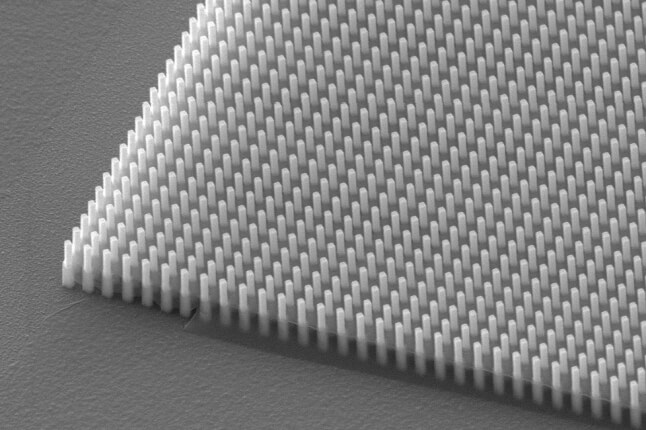News
Solid oxide fuel cells, which rely on low-cost ceramic materials, are among the most efficient and promising type of fuel cell. They work like batteries that don't need charging. (Image courtesy of WikiCommons)
Fuel cells, which generate electricity from chemical reactions without harmful emissions, have the potential to power everything from cars to portable electronics, and could be cleaner and more efficient than combustion engines.
Solid oxide fuel cells, which rely on low- cost ceramic materials, are among the most efficient and promising type of fuel cell. Now, researchers from the Harvard John A. Paulson School of Engineering and Applied Sciences have found a way to harness the quantum behavior of these fuel cells to make them even more efficient and robust. In doing so, they’ve observed a new type of phase transition in an oxide material.
The research is described in the journal Nature.
Fuel cells work like batteries — generating an electric current by forcing electrons to flow between two electrodes, the anode and the cathode separated by an electrolyte. Unlike batteries, fuel cells don’t need to be recharged. All they require is fuel, mostly in the form of hydrogen.
When the hydrogen is fed into the anode, it splits into a proton and an electron. The electrolyte acts like a bouncer at an exclusive club – blocking electrons form entering and allowing protons through. The electrons are forced to go the long way around, through an external circuit, which creates a flow of electricity.
On the other side of the cell, air is fed into the cathode. When the protons get through the electrolyte and the electrons pass through the circuit, they unite with the oxygen to produce water and heat, the only emissions generated by fuel cells.
But today’s solid oxide fuel cells have a major problem. Over time, the fuel reacts with the electrolyte to degrade its efficiency. Soon, this chemical bouncer is letting both protons and electrons through, causing the electrical current going through the outside circuit to become weaker and weaker.
A solution to this problem may have been found by Shriram Ramanathan, Visiting Scholar in Materials Science and Mechanical Engineering at SEAS, and his graduate student You Zhou. The pair discovered that by designing the electrolyte on the quantum level, they could create a material that becomes more robust when exposed to fuel.
“We have combined the fields of quantum matter and electrochemistry in a way that led to discovery of a new, high-performance material that can phase transition from a metal to ion conductor,” said Ramanathan, who is currently professor of engineering at Purdue University.
Ramanathan and his team used a perovskite-structured nickelate as their electrolyte. On its own, the nickelate conducts both electrons and ions, like protons, making it a pretty lousy electrolyte. But the team coated the surface of the nickelate with a catalyst and then injected or “doped” it with electrons. These electrons joined the electron shell of the nickel ion and transitioned the material from an electron conductor to an ion conductor.
“Now, ions can move very quickly in this material while at the same time electron flow is suppressed,” said Zhou. “This is a new phenomenon and it has the potential to dramatically enhance the performance of fuel cells.”
“The elegance of this process is that it happens naturally when exposed to the electrons in fuel,” said Ramananthan. “This technique can be applied to other electrochemical devices to make it more robust. It’s like chess — before we could only play with pawns and bishops, tools that could move in limited directions. Now, we’re playing with the queen.”
This research was funded by Army Research Office, Air Force Office of Scientific, Research, Advanced Research Projects Agency-Energy (ARPA-E), IBM PhD Fellowship and National Academy of Sciences.
Topics: Environment, Applied Physics
Cutting-edge science delivered direct to your inbox.
Join the Harvard SEAS mailing list.
Press Contact
Leah Burrows | 617-496-1351 | lburrows@seas.harvard.edu



